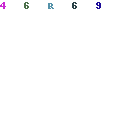SIUE program to immerse East St. Louis middle school students in technological learning projects
Middle school students in East St. Louis will experience a technologically rich learning environment through an SIUE program.

Sharon Locke, STEM Center director, Jessica DeSpain, English professor and IRIS center director and Liza Cummings, professor of curriculum and instruction collaborated to receive an ITEST grant from the National Science Foundation.
SIUE received an Innovative Technology Experiences for Students and Teachers (ITEST) grant from the National Science Foundation program which funds the project.
Sharon Locke, director of The Center for Science, Technology, Engineering and Mathematics (STEM) Research, Education and Outreach, Liza Cummings, professor of curriculum and instruction and Jessica DeSpain, English professor and director of the Interdisciplinary Research and Informatics Scholarship (IRIS) Center, collaborated to propose the project. It is titled Digital East St. Louis: An Urban Place-Based Learning Model to Promote Information Technology and Computer Science Career Interests of Minority Youth.
Though SIUE has a number of projects in East St. Louis–Upward Bound for high school students and the Head Start program for young children—Locke said she and her collaborators saw a need and opportunity to enhance education for middle school students and submitted their proposal to the National Science Foundation.
“We wanted try to fill the gap and create a pipeline for those students…that would lead them into high school,” Locke said. “We’re trying to provide equal opportunities for STEM to those students that are interested.”
According to their proposal, the project’s main goal is to “experiment with new content and methods for engaging students who are underrepresented in STEM fields in the computing sciences via a place-based curriculum that asks students critical questions about the environment and culture of their own region.”
Through a longitudinal quasi experiment, project researchers will study changes in 50 students over a 3-year period assessing their attitudes, interests and skills in STEM. Students will be taught about archiving software, working with images and documents, mapping communities through geographic information systems (GIS) and will conduct oral histories. They will compare outcomes for these students with a cohort group in the district.
Cummings said the research developed from the project, which they intend to publish and present at conferences, will be new and groundbreaking within the field of education.
“It is something new to offer for diverse populations,” Cummings said. “That in itself will lend to other educators in terms of [them] having seen a model that works, and then trying to implement such a program to work with underserved kids or diverse populations altogether.”
DeSpain said the opportunity to work with middle school students is one of the “most rewarding aspects” of the project.
“This gives me a chance to work with students who might benefit from learning about computer sciences through a humanities-based approach more directly at an earlier stage in their development,” DeSpain said. “It’s really hands-on and gives middle-school students a lot of opportunities they wouldn’t have had otherwise. Already at this point I feel like we’ve done something wonderful for that reason.”
According to DeSpain, students will start with their own interests in the history and culture of their region, a content-based approach that will help them develop technological skills as they attempt to communicate what they learn using digital maps, archiving software and sound editing equipment.
DeSpain added that SIUE’s IRIS center, which uses technology to answer human-based problems will serve as a model for this project that will involve middle school students in what she calls an “exciting and ambitious” endeavor.
“What can we learn about East St. Louis, and how can we use computers to answer some of these questions? Those students could be interested in perhaps the history of jazz music or the architecture around East St. Louis or how the Mississippi River has influenced the region,” DeSpain said. “They’ll answer those questions and also communicate those answers using skills essential to information technology.”
Locke said the project will give students a better understanding of what is possible with technology and computers and how it is relevant in their lives.
“I think that in the world that we live in, technology is all around us and is pervasive in what we do,” Locke said. “The hope is that they’ll find the topics interesting and they’ll see the relevance of the technology and then maybe that will inspire them to continue to study computer science or other STEM related fields.”
According to Cummings, the project gives underprivileged students opportunities to work with technological equipment and explore their own part of the world.
“The hope is that those embedded ideas will eventually spiral into something even bigger once they move onto high school and preferably to university levels as well,” Cummings said.
Projected plans in the program include providing additional learning experiences for students on Saturdays and throughout the summers. STEM exploration nights will take place as well and allow students to showcase their work.
Filed Under: English Language & Lit • Teacher Education












